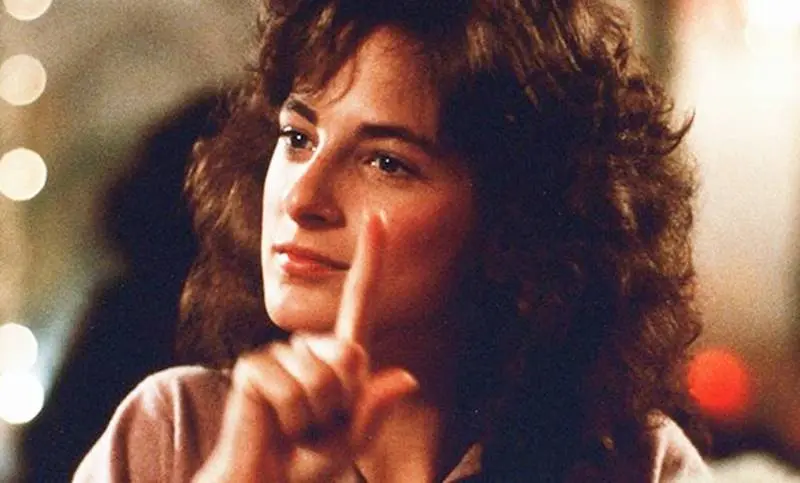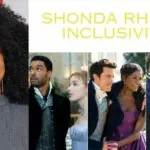SENSITIVITY WARNING: This article explores the evolving conversations around representation in Hollywood, including historically harmful practices of casting today. Its purpose is to reflect on where we’ve been- and where we’re going.
Table of Contents
The Question
The most recent use of blackface in an American film I can think of is in ‘Tropic Thunder,’ where it’s deployed in a genius twist of satire: a white, Australian method actor (played by Robert Downey Jr.) undergoes a pigment-altering surgery to play an African-American man. To this day, the comedy catches major flack- arguably more flack than the character receives within the world of the movie- essentially being derided for what some argue is the fundamental reprehensibility of blackface, even when used as a device to mock the offensive practice itself.
Alternatively, blackface has been employed metatextually, for the sake of misunderstanding- a fundamental comedic device that dates back to the Greeks. Take the scene in ‘Zoolander,’ where the character is accidentally covered in coal dust, or an episode of ‘The Golden Girls,’ where the women wear mud masks and find themselves in a painfully cringey situation. In both cases, the audience is forced to live in the awkwardness of the misunderstanding, rather than the visual gag itself being the joke.
But sad as it is, there was an insane- albeit more recent than distant- period in Hollywood history when Laurence Olivier and Orson Welles played Othello, the Russian-born Yul Brynner played the King of Siam, Natalie Wood and George Chakiris (of Russian and Greek descent) played Puerto Rican siblings in ‘West Side Story,’ and actors like Mickey Rooney, Marlon Brando, and even Katharine Hepburn were made up to look Asian.
When this quintessentially racist convention of the silver screen- i.e., blackface and yellowface- finally went out the window as a genuine practice, its satirical or critical use remained, as in Spike Lee’s ‘Bamboozled,’ or debatably ‘Tropic Thunder.’ But with that shift came a new kind of controversy, rooted in racial nuance. The nuance I’m referring to is the vague umbrella term used by casting directors: “ethnic.” It’s a hot-button issue, because race and ethnicity are fundamental aspects of identity.
When Spike Lee– a pioneer of multicultural Cinema and an advocate for racial respect- cast John Leguizamo, an actor of self-reported Latinx heritage, as an Italian man in ‘Summer of Sam,’ it stirred controversy. A huge part of the backlash centered on how the character- a stereotypical Italian-American lothario- was portrayed. Leguizamo has since described his portrayal of Italians as a form of “revenge,” explaining that he’d long seen Italian actors play characters of his heritage. His examples? Al Pacino’s pivotal turn as the Cuban crime lord in ‘Scarface,’ and Brian De Palma’s later film ‘Carlito’s Way,’ where Pacino plays a Puerto Rican crime boss- a film Leguizamo also stars in, and (SPOILER ALERT!) gets to kill Pacino’s character in the final scene.
Today, the culture isn’t as accepting of so-called “ethnic” casting. The current concern is specificity.
A fascinating recent example is the apparent outrage over Sam Mendes’s casting choices for his upcoming Beatles tetralogy. Some members of the public are upset over the lack of Liverpudlians- i.e., Scousers (or, for American clarity, people from Liverpool). This may seem like a niche complaint, but it’s a microcosm of the broader debate: how realistic is it to expect an actor to be both perfect for the part in terms of talent and identity- whether racial, cultural, or otherwise?
From this ongoing debate, another question arises: if it’s morally reprehensible for an actor of one race to portray another, does the same principle apply to other intrinsic aspects of identity- specifically, disability?
If the character is paraplegic, is it wrong for Daniel Day-Lewis to play the role in ‘My Left Foot’? If the character is autistic, is it immoral for Sean Penn to portray them in ‘I Am Sam’? If the character is blind, is it iniquitous for Al Pacino to take on the role in ‘Scent of a Woman’?
These are three actors who have each been called “great”- some even “the greatest” in American film history. So if they’re the best available actors for those roles, why shouldn’t they play them? After all, isn’t that what acting is? Pretending?
But then comes the uncomfortable follow-up: what are the odds that a disabled actor- even if they do exist in the pool- is going to be any good?
Things to do:
- Subscribe to The Hollywood Insider’s YouTube Channel, by clicking here.
- Limited Time Offer – FREE Subscription to The Hollywood Insider
- Click here to read more on The Hollywood Insider’s vision, values and mission statement here – Media has the responsibility to better our world – The Hollywood Insider fully focuses on substance and meaningful entertainment, against gossip and scandal, by combining entertainment, education, and philanthropy.
Enter Marlee Matlin
In 1987, Matlin joined an illustrious group of actors that includes Eva Marie Saint, Julie Andrews, and Barbra Streisand (just to name a few), and has since inducted Anna Paquin, Jennifer Hudson, and Lupita Nyong’o. These are among the, to date, sixteen actors- both male and female- who have won Academy Awards for their film debut.
To boot, Matlin exists in a category unto herself. She remains the youngest actor ever to win the Academy Award for Best Actress, having been a mere twenty-one years old when she beat out, among others, Jane Fonda and Sigourney Weaver. The Oscar was presented to her by her co-star- and, as later revealed, her abusive partner- William Hurt.
At the time of her win, she stood alone in two distinct categories. But I imagine she’s glad not to be the only deaf actor with an Oscar anymore. In 2022, Troy Kotsur became the second deaf actor to win an Academy Award, taking home Best Supporting Actor for his performance in ‘CODA’- a film in which he co-starred with Matlin herself.
Speaking of ‘CODA,’ it raises a larger question about Matlin’s career. When the trailers started dropping for that film, I remember thinking, “Oh my gosh, Marlee Matlin is making a comeback! Hooray!” But was ‘CODA’ technically a comeback?
Because here’s the thing: Matlin never really went anywhere. A quick look at her IMDB reveals that she’s been working consistently since her Oscar win. In fact, she seems- at this point- to be a kind of inevitability in popular culture (which is just fine by me, as I’m unabashedly enamored with her since I was first introduced to her on ‘West Wing’). She’s something of an icon.
That said, anyone who’s won an Oscar- especially actresses- will tell you that the interesting parts often dry up. In fact, Marlee Matlin is listed on an IMDB list as one of “15 actors whose careers went downhill after winning.” You get pigeonholed. And I’d wager that was the case for Matlin. Her screen persona is very specific. She has, for instance, a distinct voice- literally. The sound of her voice is ironically indubitable. Instantly recognizable. Especially when she’s appeared in voice roles on ‘Family Guy’ throughout the years.
WATCH THE TRAILER of the Film and the Revolution: ‘Can I Go Home Now?’
The Children Around the World Continue to Ask the question
Acting is Reacting
As the idiom goes.
It is. However, many misconstrue this idiom as a justification for the “first thought: best thought” way of thinking around the craft. When in reality, reaction is a process of concentration. Concentration is the key to every acting technique and style from Stanislavski to Meisner to Kevin Smith. And because Matlin must wholly concentrate on quite literally every single syllable of every single word her scene partner says (so that she can read their lips) her handicap may very well be componential to her ability as an actor. Because for her, concentration isn’t just a technique- it’s essential. It’s survival.
Some people, like Tom Cruise, just fit on the silver screen. Matlin, particularly as a beautiful woman with a commanding presence, does too- but she brings the added distinction of doing so while portraying deaf characters across a wide range of roles.
Related article: EVOLUTION: Every Ryan Gosling Role From 1995 to 2020, All Performances Exceptionally Poignant
Related article: EVOLUTION: Every Henry Cavill Role From 2001 to 2021, All Performances Exceptionally Poignant
Related article: All Best Actor/Actress Speeches From The Beginning Of Oscars 1929-2019 | Hollywood Insider
A Deafening New Voice on Broadway
That range and presence were on full display during her run in Deaf West’s 2015 Broadway revival of ‘Spring Awakening,’ where she, along with the rest of the ensemble, also proved another old acting idiom: timing is everything.
The groundbreaking production wasn’t simply a performance- it was a moment. Matlin’s participation also gave the show instant visibility, drawing mainstream attention to a production that redefined what musical theater could be.
‘Spring Awakening’ used a dual-language performance style, where Deaf and hearing actors shared each role, signing and speaking in tandem. The result was a musical experienced through both sight and sound, shaped as much by rhythm and movement as by melody. The entire production was visually musical- an achievement of timing, collaboration, and precision. And right at the center of that innovation was Matlin.
Her role in the production wasn’t just symbolic. She brought star power, yes, but more than that, she brought credibility. Her legacy- an Academy Award-winning actress who had never left the cultural conversation- anchored the show’s bold experiment in accessibility. Audiences who may have never seen a Deaf-led production, or even considered Deaf culture in the context of Broadway, were pulled in because Marlee Matlin was part of it. And once inside, they were shown a new model of what representation, musicality, and ensemble performance could look like.
It was specifically during this production that a new phase of Matlin’s legacy was starting to take shape. Where it wasn’t just that she was the first deaf actor to win an Oscar. It’s that she continues to use her platform to open doors, shift norms, and bring others with her similar challenges into the spotlight.
Related article: EVOLUTION: Every Ryan Gosling Role From 1995 to 2020, All Performances Exceptionally Poignant
Related article: EVOLUTION: Every Henry Cavill Role From 2001 to 2021, All Performances Exceptionally Poignant
Related article: All Best Actor/Actress Speeches From The Beginning Of Oscars 1929-2019 | Hollywood Insider
The Answer
At the beginning of this article, I brought up the question about Sean Penn, Daniel Day-Lewis, and Al Pacino playing differently abled characters- and what are the odds that if you cast a disabled actor, they’re going to be as good as actors of these three’s caliber?
And the answer is…I don’t know. But I also don’t know that the industry has looked hard enough, has looked wide enough. Because there is still a lingering stigma, a persistent assumption that disability somehow limits performance ability. But it doesn’t have to. We need more figures like Marlee Matlin, who used her influence on ‘CODA’ to insist on a deaf cast- one of whom, as mentioned, went on to win an Oscar for that very performance.
Matlin also advocated for a deaf director- Shoshannah Stern- on her deeply personal documentary, ‘Marlee Matlin: Not Alone Anymore,’ which chronicles her life, her deafness, and the immense highs and tragic lows of finding fame at such a young age. The film is currently touring the U.S. and will soon be available on streaming.
Marlee is doing the work- using her cachet to push Hollywood toward a wider, more inclusive vision of talent. And who knows what that wider net might bring in.
By Joseph Tralongo
Click here to read The Hollywood Insider’s CEO Pritan Ambroase’s love letter to Cinema, TV and Media. An excerpt from the love letter: The Hollywood Insider’s CEO/editor-in-chief Pritan Ambroase affirms, “We have the space and time for all your stories, no matter who/what/where you are. Media/Cinema/TV have a responsibility to better the world and The Hollywood Insider will continue to do so. Talent, diversity and authenticity matter in Cinema/TV, media and storytelling. In fact, I reckon that we should announce “talent-diversity-authenticity-storytelling-Cinema-Oscars-Academy-Awards” as synonyms of each other. We show respect to talent and stories regardless of their skin color, race, gender, sexuality, religion, nationality, etc., thus allowing authenticity into this system just by something as simple as accepting and showing respect to the human species’ factual diversity. We become greater just by respecting and appreciating talent in all its shapes, sizes, and forms. Award winners, which includes nominees, must be chosen on the greatness of their talent ALONE.
I am sure I am speaking for a multitude of Cinema lovers all over the world when I speak of the following sentiments that this medium of art has blessed me with. Cinema taught me about our world, at times in English and at times through the beautiful one-inch bar of subtitles. I learned from the stories in the global movies that we are all alike across all borders. Remember that one of the best symbols of many great civilizations and their prosperity has been the art they have left behind. This art can be in the form of paintings, sculptures, architecture, writings, inventions, etc. For our modern society, Cinema happens to be one of them. Cinema is more than just a form of entertainment, it is an integral part of society. I love the world uniting, be it for Cinema, TV, media, art, fashion, sport, etc.
More Interesting Stories From The Hollywood Insider
– Want GUARANTEED SUCCESS? Remove these ten words from your vocabulary| Transform your life INSTANTLY
– A Tribute to Martin Scorsese: A Complete Analysis of the Life and Career of the Man Who Lives and Breathes Cinema
– Do you know the hidden messages in ‘Call Me By Your Name’? Find out behind the scenes facts in the full commentary and In-depth analysis of the cinematic masterpiece
– A Tribute To The Academy Awards: All Best Actor/Actress Speeches From The Beginning Of Oscars 1929-2019 | From Rami Malek, Leonardo DiCaprio To Denzel Washington, Halle Berry & Beyond | From Olivia Colman, Meryl Streep To Bette Davis & Beyond.
– In the 32nd Year Of His Career, Keanu Reeves’ Face Continues To Reign After Launching Movies Earning Over $4.3 Billion In Total – “John Wick”, “Toy Story 4”, “Matrix”, And Many More

Joseph Tralongo is a playwright and screenwriter who approaches storytelling with a deep respect for film’s ability to distill human behavior into meaningful moments. His personal work- i.e. his plays, screenplays, and films- leans into semantic tension, moral ambiguity, and the quiet unraveling of social dynamics- not to preach, but to parse. For him, writing is a slow excavation of truth through craft. With a background in theatre and independent film, he brings a structural precision and dramatic instinct to every film he reviews. Hollywood Insider’s mission to champion substance over spectacle aligns with Joseph’s belief that storytelling should investigate, not dictate.









